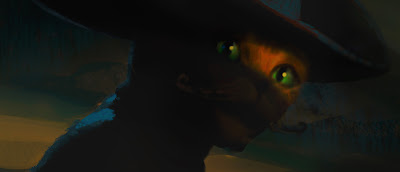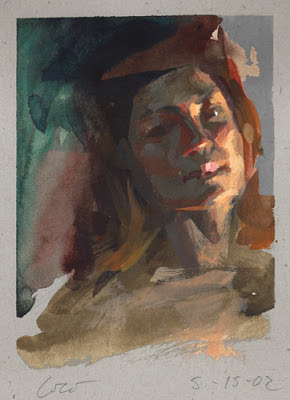ROBERT M. CUNNINGHAM

Everyone talks about the importance of "restraint" in making pictures, but restraint is only meaningful if you possess something significant to restrain. (If you have no talent, you're not actually restraining anything.) Look at the restraint in this terrific painting by illustrator Robert Cunningham . How does he persuade us that his simple blobs of white paint are birds taking off, while the very similar blobs of blue paint right next to them are openings in the trees? No eyes, beaks, feathers, feet-- barely even wings-- yet these are lovely birds. A lot of wisdom and an awful lot of drawing goes into Cunningham's ability to capture the essence of birds in such basic shapes Cunningham was born in Herington, Kansas, where the flat plains stretch almost forever. He grew up leading a simple life as the son of a railroad man. Later, art critic William Zimmer observed, "His native ground has perhaps been an inspiration for the flat, bright planes of color tha






